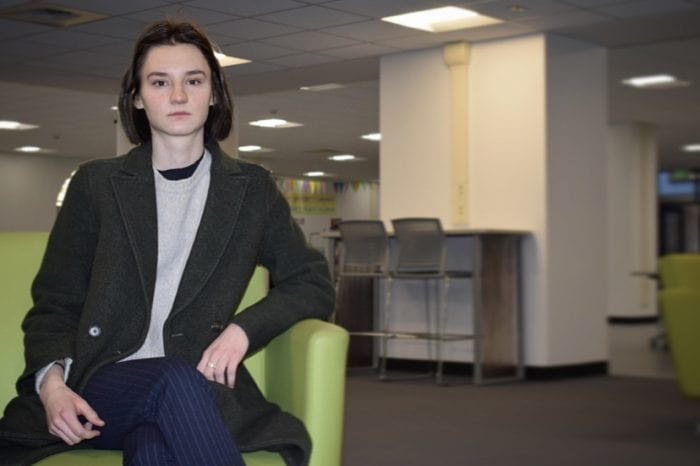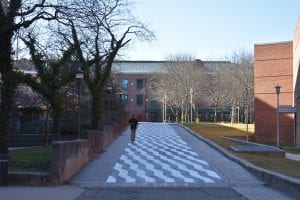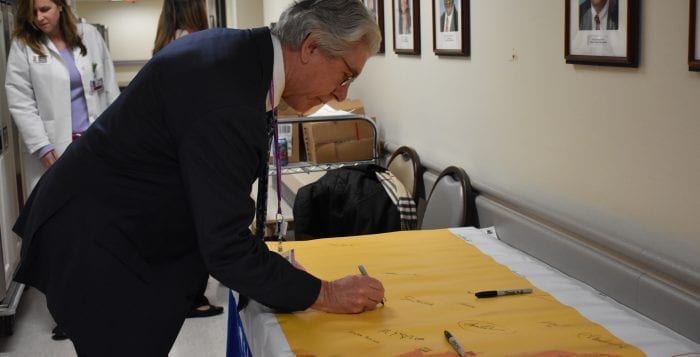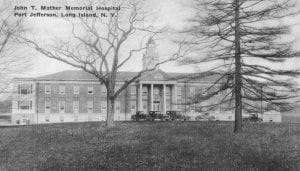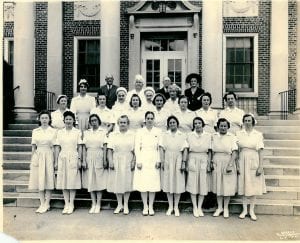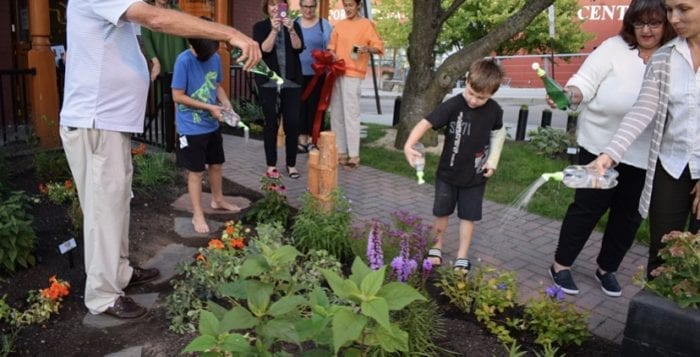By Julianne Mosher
It’s not located on Gumdrop Lane, but you can spot it on North Huron Street in Ronkonkoma.
On the right-hand side of the dead-end street is a real-life gingerbread house. Adorned with nearly a thousand decorations across its front lawn, it’s like a miniature Disney World hidden in a Suffolk County suburb.
But although the property is not huge, it has drawn thousands of people each year, said Peter Tomasello, owner of the home .
“This is more of an amusement park,” he said. “We’re probably one of the only fully interactive displays in North America — it’s very unique, especially to Long Island.”
Tomasello’s love for Christmas began when he was a child. His grandmother would bring him to different houses around Long Island to look and admire their decorations.
“I was just blown away,” he said. “And I kind of wanted to be that house.”
So, from then on, he’d use his birthday and Christmas money to raid the stores selling discounted holiday decorations instead of buying games and G.I. Joes. He would decorate his childhood home every year on Shelter Road in Ronkonkoma before establishing his own place on the other side of town.
“I started to accumulate anything that I could at that point,” he said. “And then obviously, when I started to work and things like that, all bets were off. Now that I have my own house, it’s pretty much just go-time.”
When he and his husband, Drew Jordan, purchased their home at 135 North Huron St., Tomasello said his one condition was that they’d buy a gingerbread house. Soon enough, he found this location, and with a little extra paint, it has maintained its name as the Ronkonkoma Gingerbread House ever since.
“I’ve just always loved Christmas,” he said. “I’ve always loved happiness, and I love making other people happy and just giving them a magical kind of experience.”
Before COVID-19, Tomasello said between 500 to 1,000 people would visit his house per night. However, due to new regulations, he’s monitoring how many people can come and go to appreciate the lights, music and dancing stations in a safe, socially-distanced, way.
He said that starting around July, people were messaging his home’s Facebook page asking him if the light shows were still on this year. Being a staple in the community and knowing that other holiday traditions were being cancelled, he knew they had to open it up.
With COVID, the couple implemented some new rules, like mask-wearing and a cap on the number of people on the property at one time. There is a hand sanitizing station (with peppermint-scented sanitizer) for people not wearing gloves or mittens, and some stations have been changed so there is less contact.
Compared to other heavily decorated homes, the Gingerbread House has a light show with 12 stations where, when a button is pressed, a show begins with animatronics of elves baking cupcakes, Santa Claus and his wife preparing gifts, and Nutcrackers — who crack jokes.
Penguins play ice hockey across from Comet, the talking reindeer who reminds those stopping by to maintain social distancing. Lucy, from the Peanuts gang, gives advice on one side of the lawn, while Elsa and Anna sing “Let it Go” for families and lights blink along with the music.
“Every item here has its own story,” explained Tomasello.
The Frozen scene is in memory of his close friend’s daughter, who passed away just before her third birthday, and who loved the movie. And that family is also the reason the couple accepts donations upon arrival, with funds going directly to the Nassau/Suffolk Autism Society of America (NSASA). The little girl’s brother is autistic.
“It was really devastating for us because he didn’t even understand what was going on when his sister passed,” he said. “So that’s why we do the donation box for the Autism Society.”
While every year the front lawn looks different with new or returning scenes, the Frozen stage always comes back to remember her.
“We’re always going to have it,” he said. “That’s the heart of this place — being able to have the Frozen scenes.”
While they don’t charge for entry, the donations to NSASA are their way to give back.
“This is simply our philanthropy,” said Tomasello. “This is our way of giving back to the community in general, and obviously making whatever donations people want to bring to go to a good cause.”
He said that while seeing the smiling faces of the kids is great, he loves seeing the reactions of the parents and grandparents.
“You’re always going to please the kids, they’re always going to love it. But when you can make a 70-year-old feel like they’re seven, that’s cool … that’s really cool.”
The Gingerbread House, 135 N. Huron St., Ronkonkoma will be open daily through Jan. 1. Hours are Sunday through Thursday from 5:30 p.m. to 10 p.m., and Friday and Saturday from 5:30 p.m. to 11 p.m.
All photos by Julianne Mosher














 Erin Reid, NahMaStay Vegan
Erin Reid, NahMaStay Vegan Rob, Darlene, Bobby and Francesca Baslie
Rob, Darlene, Bobby and Francesca Baslie Gary Newman, Beewitched Bee
Gary Newman, Beewitched Bee JoAnn DeLucia, JoAnn’s Desserts
JoAnn DeLucia, JoAnn’s Desserts Agathe Snow, Mushrooms NYC
Agathe Snow, Mushrooms NYC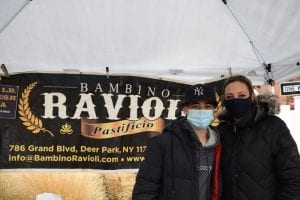 Theresa DeGregorio, Bambino Ravioli
Theresa DeGregorio, Bambino Ravioli Marc, Jacob and Melissa Gordon, Sweets by Amy G
Marc, Jacob and Melissa Gordon, Sweets by Amy G Danielle Paul, Pecks of Maine Jams
Danielle Paul, Pecks of Maine Jams Naela Zeidan, Naela Organics
Naela Zeidan, Naela Organics







